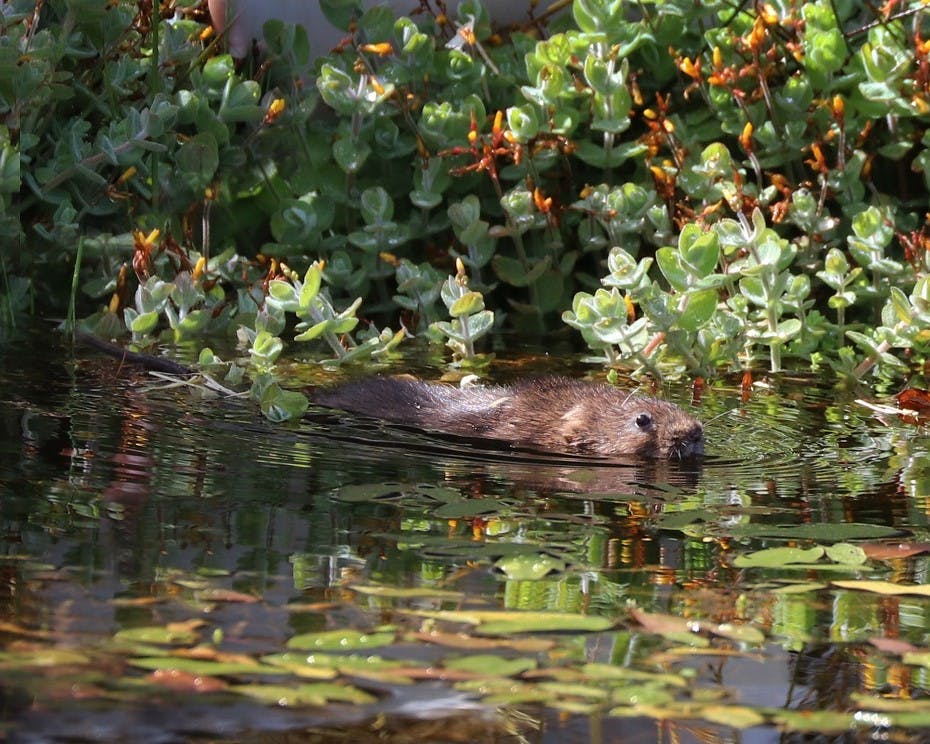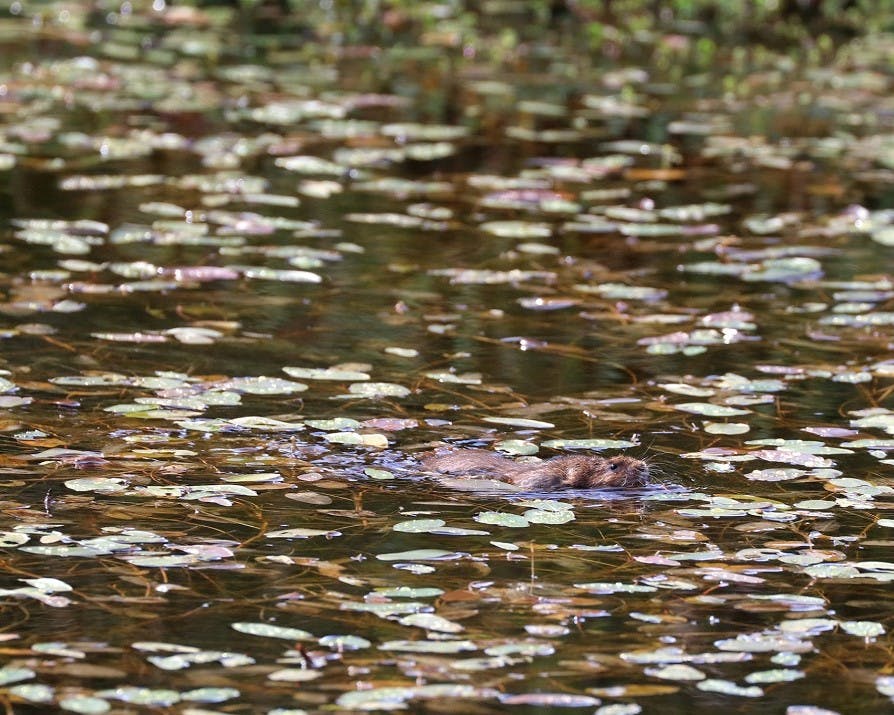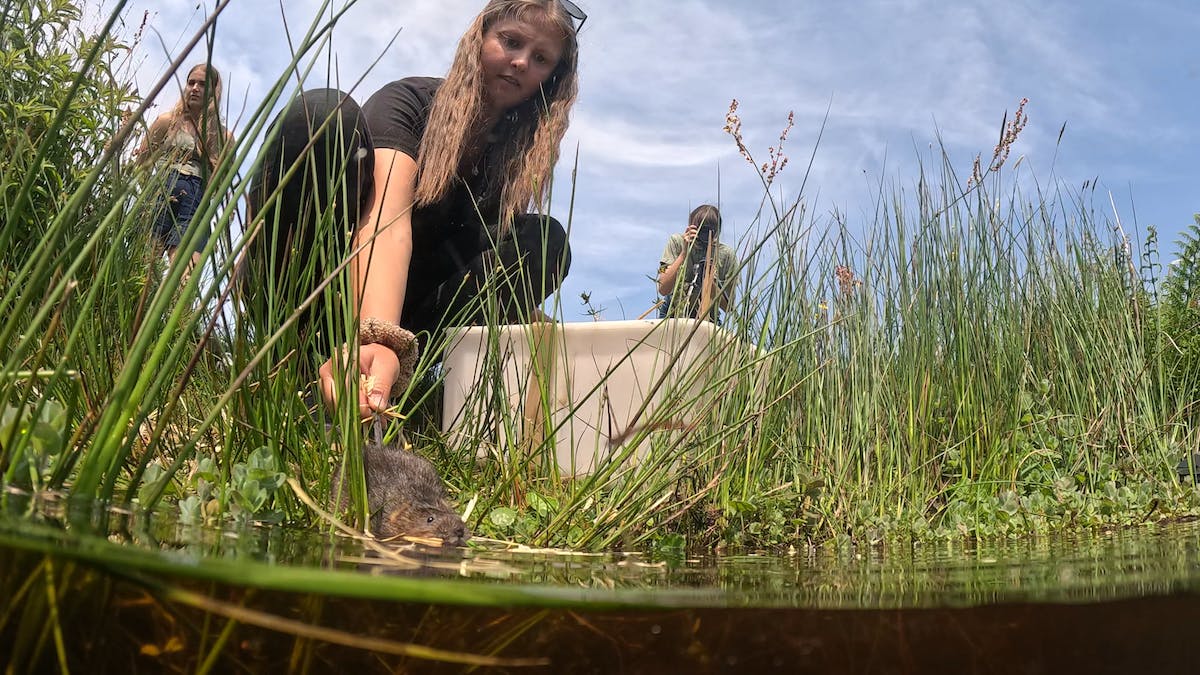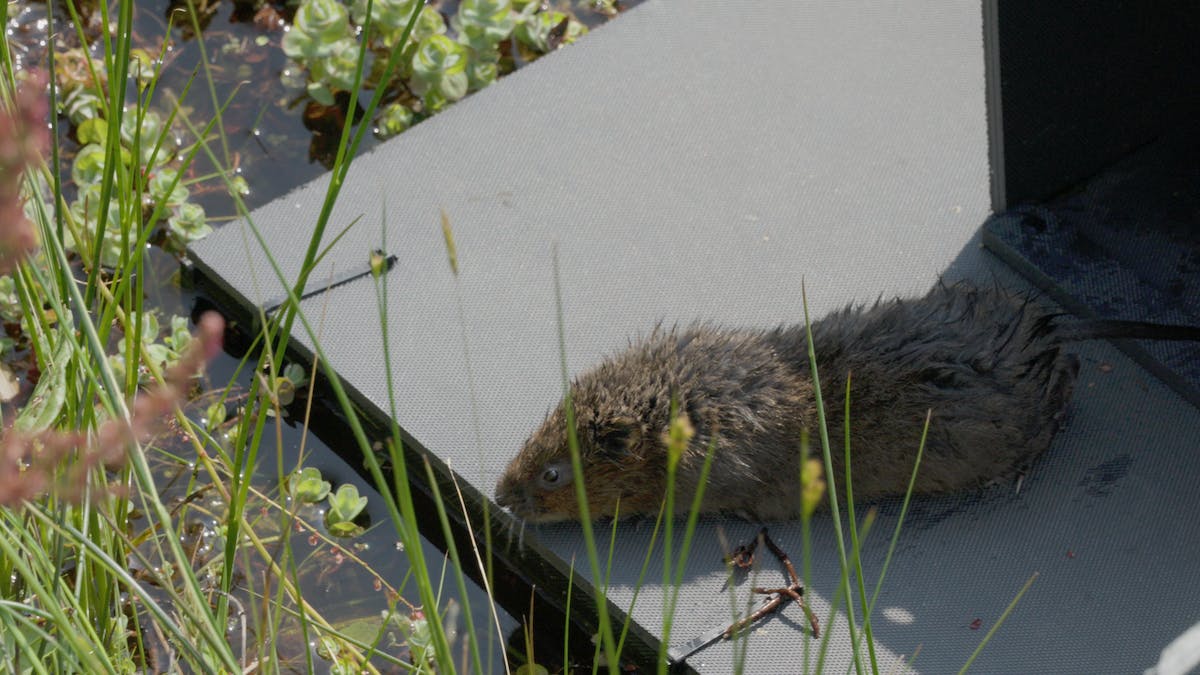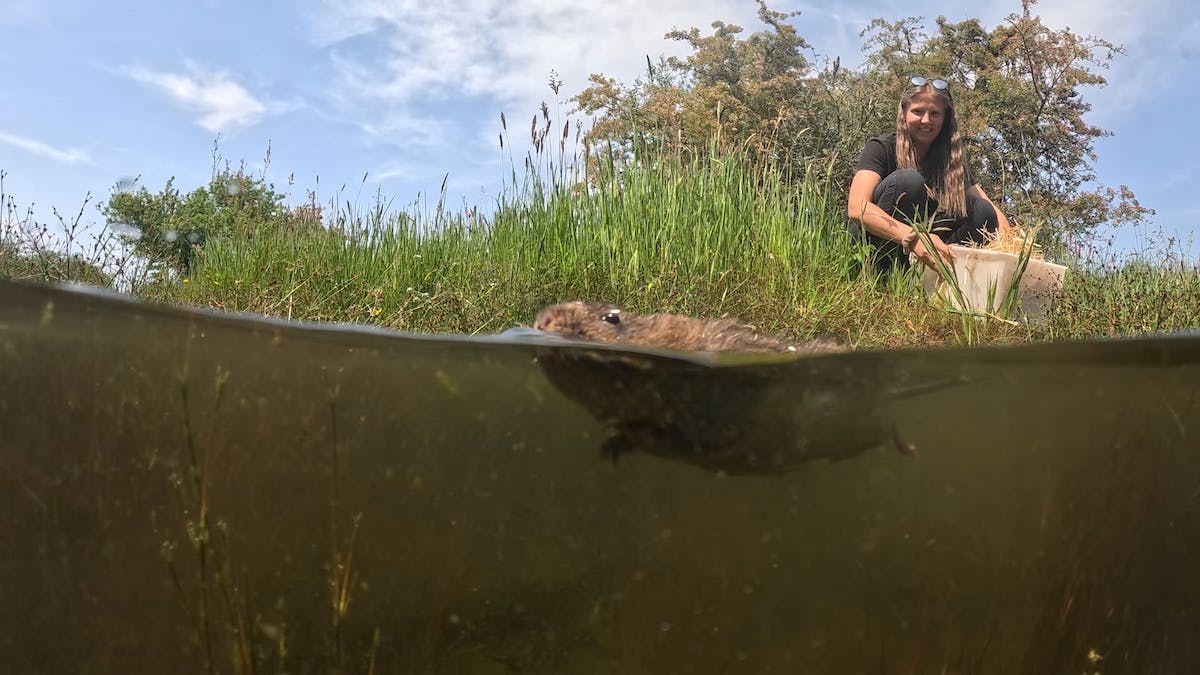- Management Plan
- Budget spent: £14,870
- Status: Implemented
Water voles were a common semi-aquatic rodent found around the UK’s waterways until around the 1990s. Since then, they’ve become one of the fastest declining species in Britain. Their demise hasn’t gone unnoticed with a series of recent reintroduction programmes taking place around the UK to save this keystone species. This project, which is part of the nationwide effort to reintroduce ‘Ratty’ - the character famed in the children’s story Wind in the Willows, aims to bring water voles back to Cornwall in the southwest of England where they went extinct in the late 1990s.
Project Timeline
June 2023
Phase 2 of water vole releases: 84 voles released
September 2022
Phase 1 of water vole releases: 135 voles released
Are they really water rats?
Despite its rat-like appearance and having the name in the classic children’s novel, the water vole (Arvicola amphibius) is not actually a rat. It is however, much larger than other voles being 14-22 cm long and reaching weights of 330g, compared to 9-11.5 cm long and 30g of a field vole. It's distinguishable from the brown rat by its flatter nose, smaller ears and furrier tail, which is about half the length of its body.
Habitat, Diet, Breeding and Behaviour
Where water voles exist, you can find them in various waterways including rivers, streams, ditches, ponds, lakes, marshes, reedbeds, and wet moorlands. They feed on a number of different grasses and riverside vegetation - around 277 different species of plants! Water voles reproduce in spring in about 3 or 4 litters.
A way to spot the presence of water voles is through their burrowing behaviour on riverbanks. They leave a nibbled lawn of grass and stems (cut at approx. 45°) around the entrance of their burrow. They are diurnal animals that do not hibernate during winter but often like to hide away in their burrows for safety. The best time of year to spot them is from April to September when they’re most active.

Are water voles endangered?
Water voles are listed as ‘Least Concern’ on the International Union for Conservation of Nature (IUCN) List of Threatened Species. However, their status is ‘Endangered’ on the Great Britain and England Red List for Mammals. As such, water voles are fully protected under Sections 5 and 9 of the Wildlife and Countryside Act 1981.
A decimated species
As previously mentioned, the water vole’s decline in the UK has been significant and rapid, with 97% lost by 1989. The situation was worse for Cornwall, where they completely disappeared in the 1990s. The invasive American mink (Neovison vison) is mostly held responsible for their decimation, where the water vole isn’t naturally prepared to evade their threat. Usually water voles can escape predators by kicking up a ‘smoke screen’ of dirt underwater but minks can swim and smell well enough to track down their prey. Hiding in their burrow is another method water voles use against predators but again this is ineffective against the mink. Female and juvenile mink are small enough to enter the vole’s burrow. This threat along with habitat fragmentation and loss is how Cornwall’s populations have suffered.
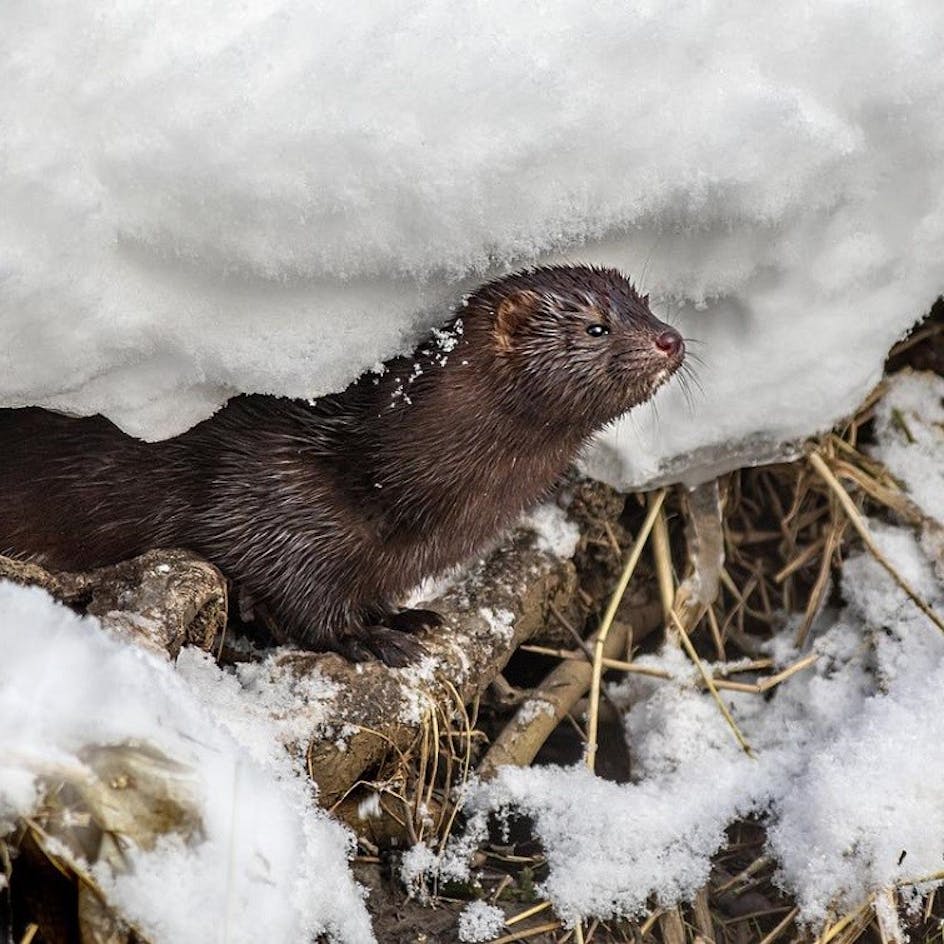
Why are water voles important?
Ecological impact
Although only a small mammal, as a keystone species, they can have a large impact on their ecosystem. One of these wondrous impacts happens when they create their burrows along riverbanks. In the process, they dry the soil and promote microbial activity that helps regulate the soil’s nitrogen levels. What’s more, water voles help build the diversity of waterway habitats through their grazing. By eating up to a third of their body weight a day of various plants, water voles can reduce the overgrowth and domination of any single species. These behaviours enhance the diversity of riverside vegetation that, of course, other species can benefit from.
The water vole also provides a major source of food for different wildlife. While reintroductions in rewilding are often associated with species further up the food chain, these small mammals play a vital role at the other end. Water voles are important prey for animals like foxes, birds of prey, herons and otters. Reestablishing their populations will therefore support a range of other species.
Successful reintroductions of water voles have already taken place in Bude, Cornwall, where the county’s only known populations are. The reintroduction programmes that ran from 2013-2018 returned positive outcomes showing voles could adapt to the habitats of this catchment. The water voles seem to prefer to settle around static or sluggish water. This habitat is typical at our project location at Trelusback Farm.

Reintroducing 'Ratty' at Trelusback Farm
The aim of this project is to reintroduce a stable population of water voles to Trelusback farm in two phases. The first phase will involve releasing 135-170 voles late in the summer of 2022 and 80-100 voles in spring 2023.
Trelusback farm, an ex-agricultural smallholding in rural Cornwall, boasts a variety of habitats from meadows, scrub, woodland, Cornish hedging, streams, and a lake, all managed for the enhancement of wildlife. Ahead of releasing water voles in the farm, our partners, Kernow Conservation, have been rewilding the land to suit its newest inhabitants. This includes:
- Coppice/remove select trees from around the main lake to remove some shade;
- Maintain some larger bushes to open up the banks;
- Manage trees to ensure they are a manageable size;
- Decrease the use of pesticides, herbicides etc;
- Remove larger degenerate gorse from the riparian habitat.
Preparations will also include reestablishing areas of dried up or stagnant ponds, involving dredging and digging.
Once the voles are released, there will be measures in place to protect them from threats. Namely, the use of mink rafts to monitor America mink populations; culling trapped minks as per government guidelines; and continuing to rewild the surrounding habitat.
Monitoring of the implementation of the project will be done using biannual water vole field sign surveys which includes the PTES National Water Vole Monitoring Programme once a year.

Engaging the Community
This project presents an exciting opportunity for the local community to get involved. Kernow Conservation aims to gather volunteers from local towns and universities to help with the land preparations and monitoring. Gaining hands-on experience in this way could engage people and spread awareness of water vole conservation. There will also be the chance for the wider public and other landowners to participate in the hope it leads to more widespread reintroductions in the region.
We’d like to thank our business partners, Green Salon Collective, for their funding towards this project and also our members, whose regular contributions make all our work possible.
If this project interests you, you might like to read about the project we supported to Translocate Water Voles at Kielder in the north of England in partnership with the Northumberland Wildlife Trust.
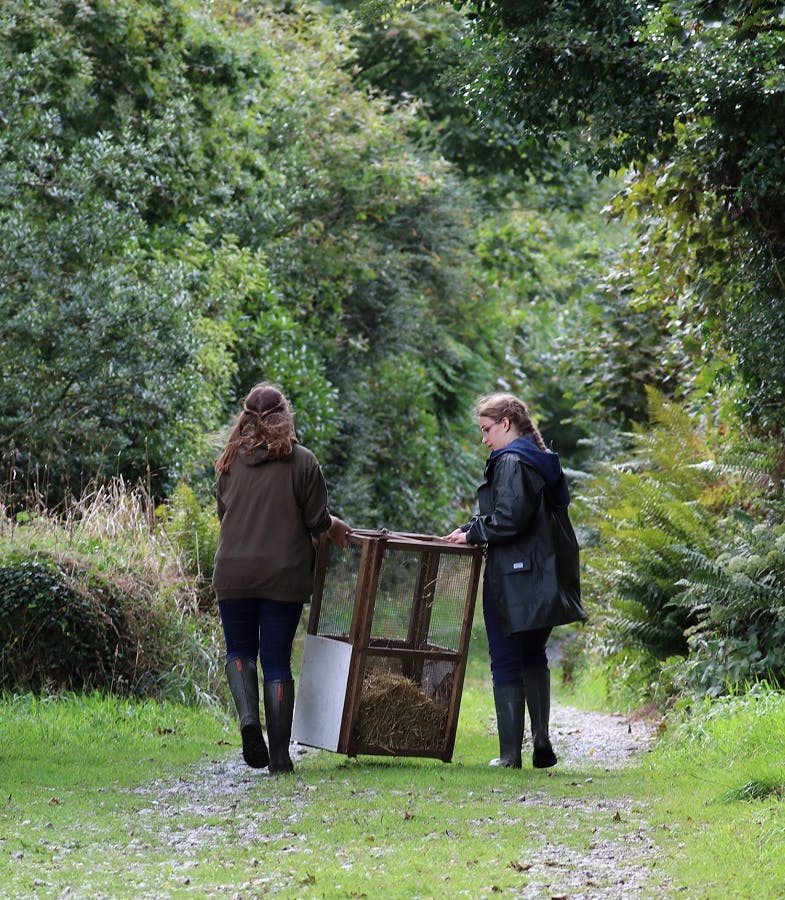

The First Release
At the beginning of September 2022, the first group of water voles ventured out into their new home. Here are a few images of the moment they entered the wild.

The Second Release
The next phase of water vole releases took place in June 2023 with 84 water voles being released into Trelusback farm. Here are some images taken of the event.

